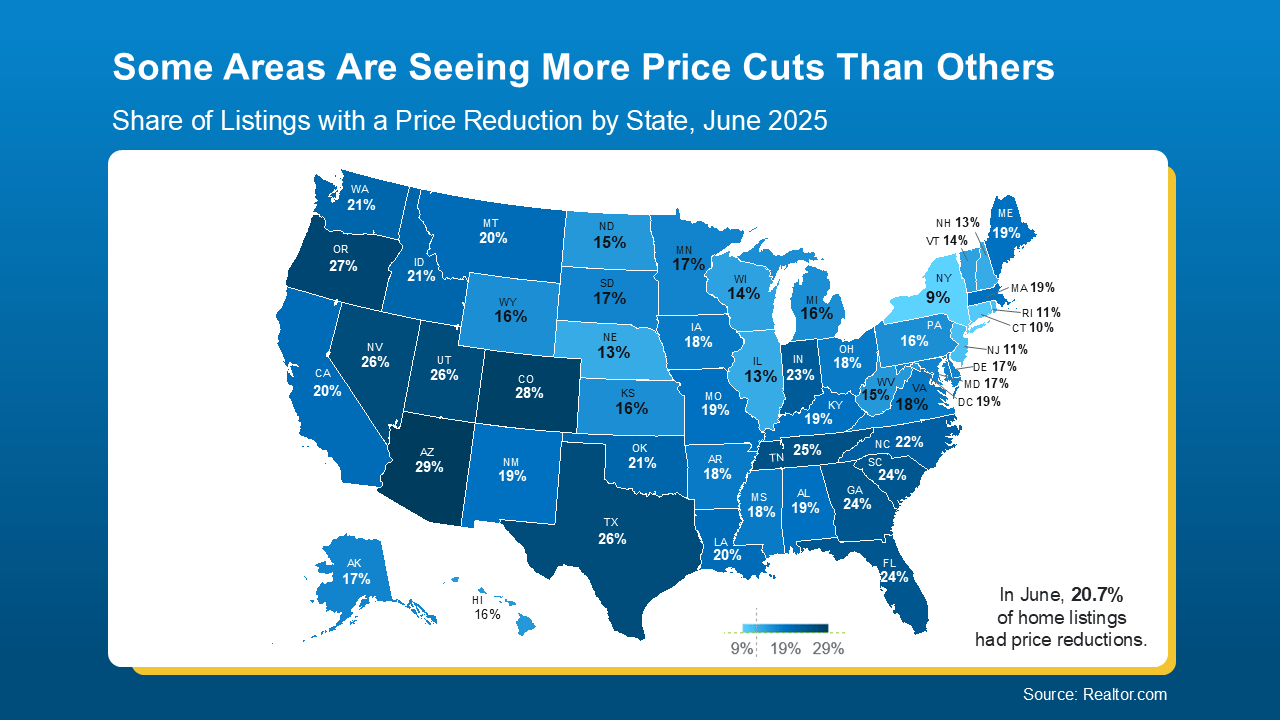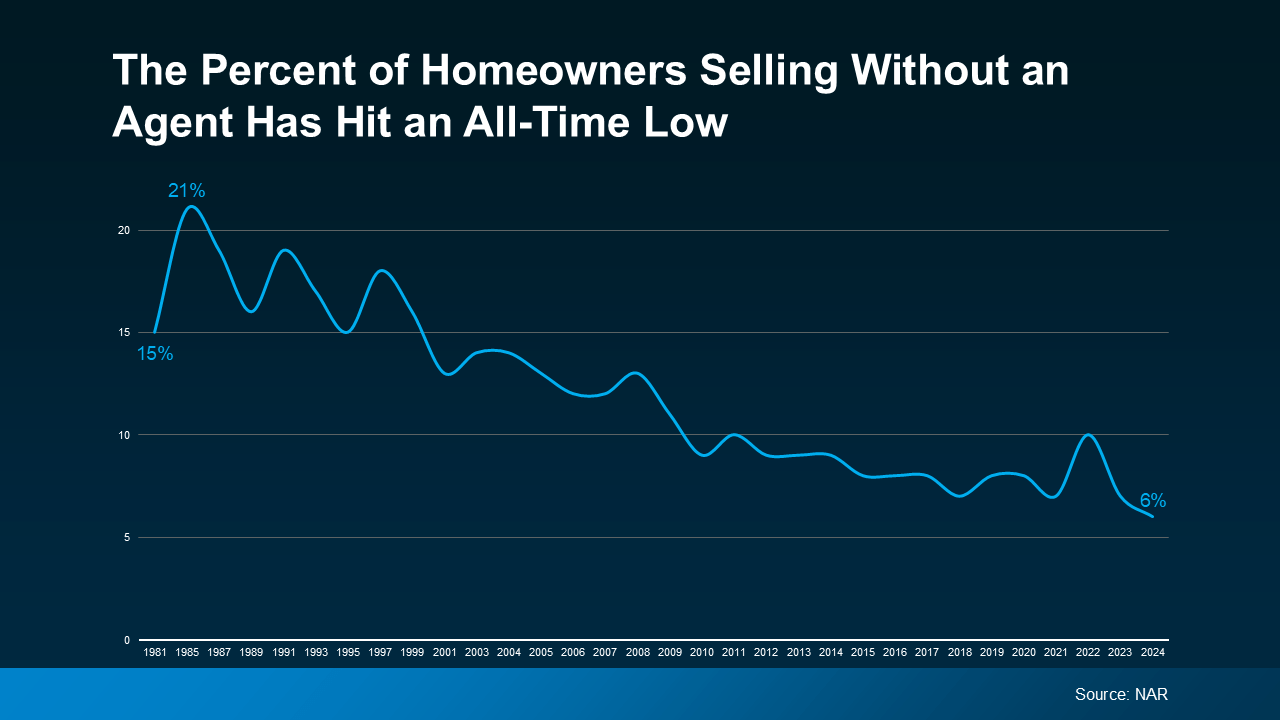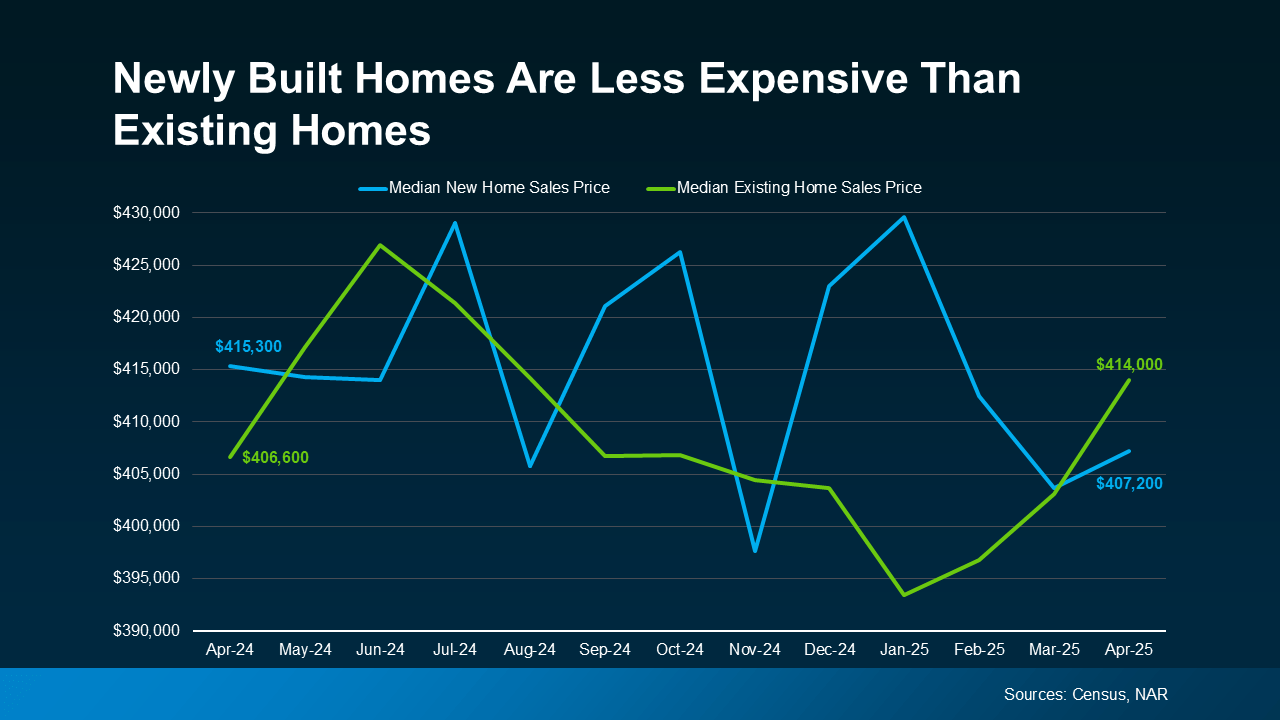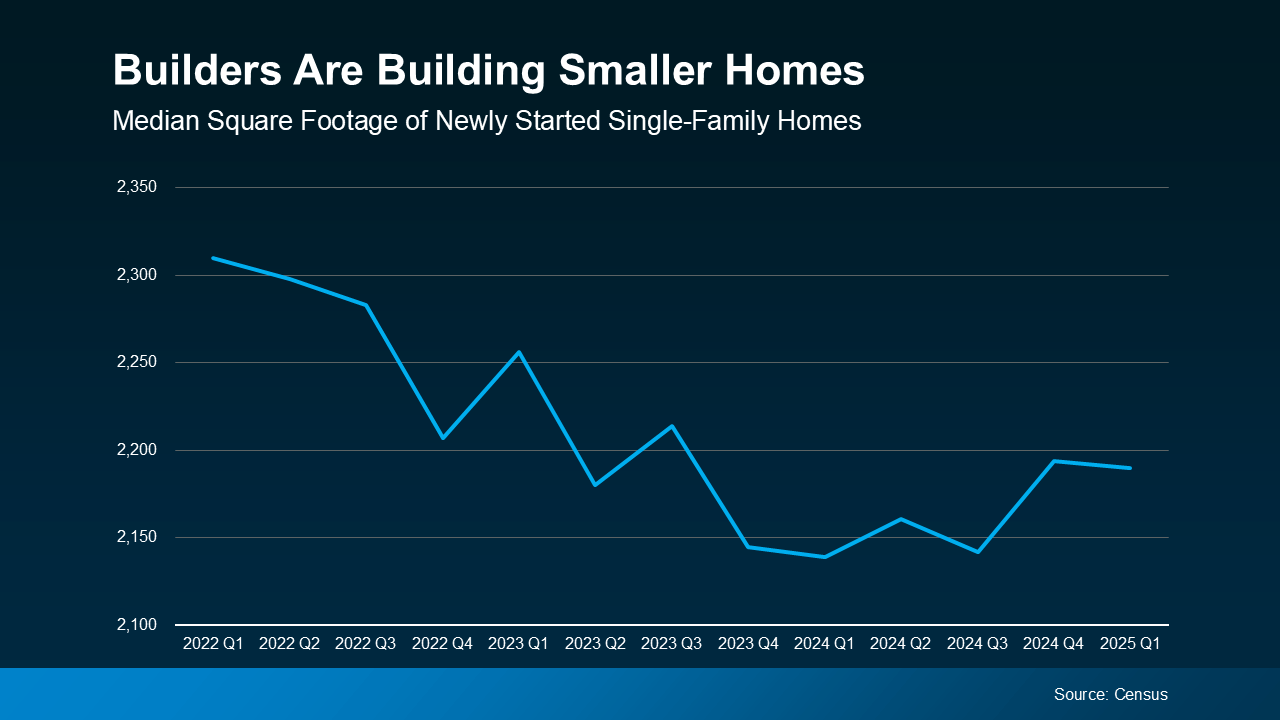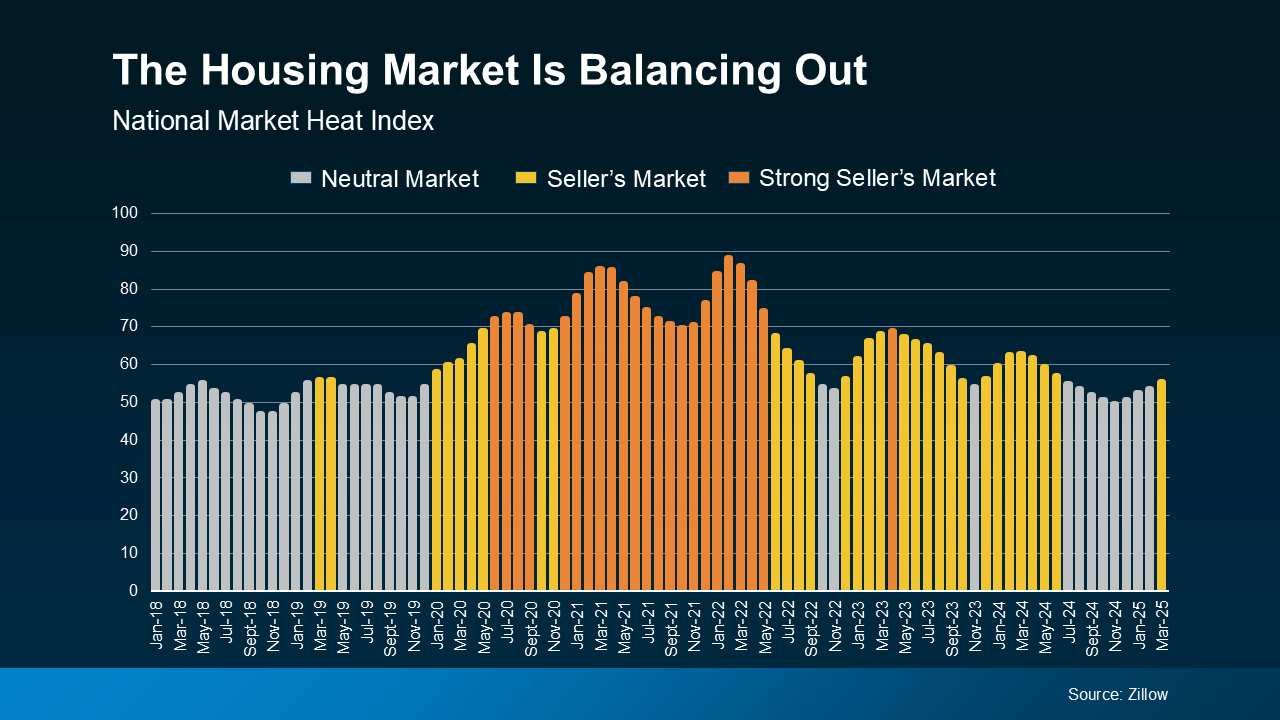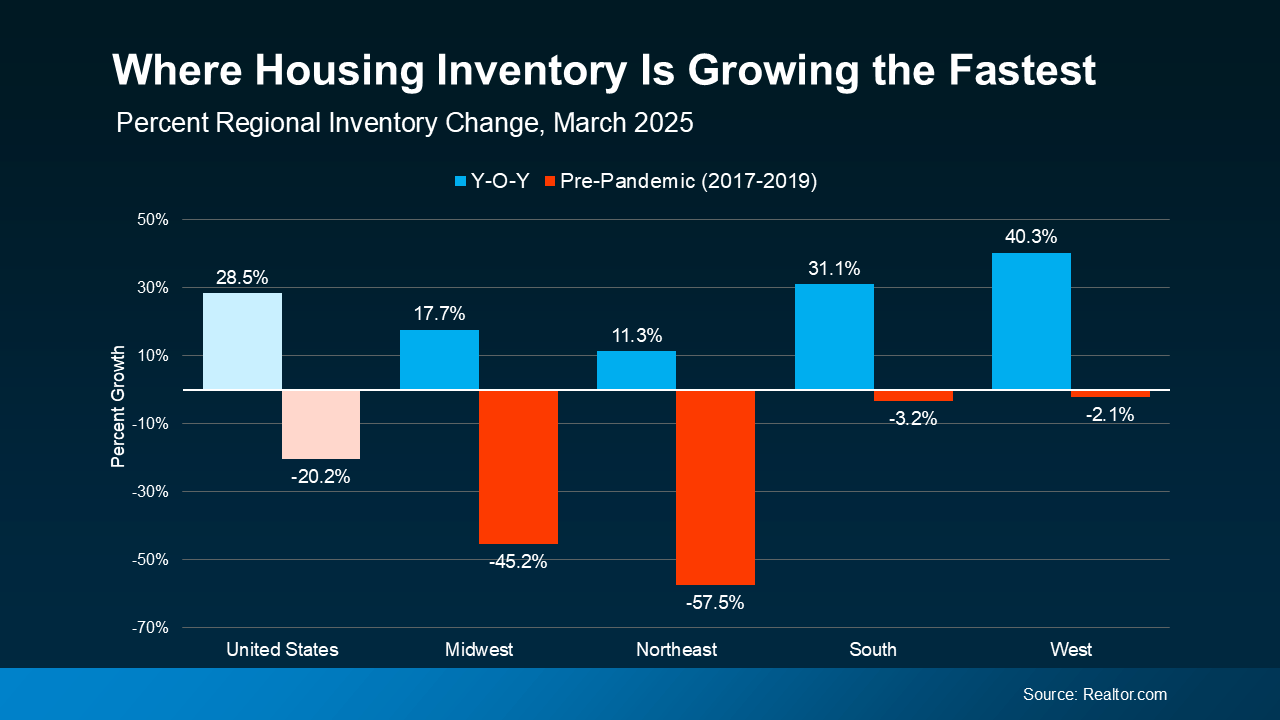Each month, we publish a series of articles of interest to homeowners -- money-saving tips, household safety checklists, home improvement advice, real estate insider secrets, etc. Whether you currently are in the market for a new home, or not, we hope that this information is of value to you. Please feel free to pass these articles on to your family and friends.
In This Issue:
-
How To Get Top Dollar Without Losing The Deal — How to price, position, and negotiate for the best outcome while keeping the buyer (and the closing) on track.
Read More » -
How Interest Rates Really Affect Your Buying Power — See how even small rate changes can shift affordability, monthly payments, and buyer demand in today’s market.
Read More » -
Beyond The Mortgage: What It Really Costs To Own A Home — From taxes and insurance to repairs, maintenance, and surprise expenses, this guide breaks down the real costs of homeownership.
Read More »
How To Get Top Dollar Without Losing The Deal
Summary
Every seller wants the highest price—but pushing too hard can cause your deal to fall apart. Getting top dollar without losing the buyer requires balance, timing, and a smart strategy. This report walks you through the key tactics to maximize your sale price while still closing smoothly. Learn how to price, negotiate, and position your home so it draws strong offers that actually lead to a successful sale.
The dream scenario for every home seller? A fast sale at top dollar with minimal hassle. But that doesn’t happen by accident—it requires skillful pricing, smart staging, and sharp negotiation. Many sellers lose great offers by being inflexible, too aggressive, or unprepared. Here’s how to walk the line and come out ahead.

 Price Strategically—Not Emotionally
Price Strategically—Not Emotionally
Top dollar doesn’t mean the highest number you can dream up—it means the most the market is willing to pay. Overpricing turns away serious buyers, while underpricing can leave money on the table. Use a comparative market analysis (CMA), local trends, and your agent’s advice to set a price that draws interest and builds momentum.
Attract Competition, Don’t Chase ItA competitively priced home with broad appeal can spark multiple offers, which drives the price up naturally. Listing too high narrows your buyer pool and reduces the likelihood of competition. Remember: the more buyers see your home, the more likely you’ll get a strong offer.
Nail the PresentationHomes that show well sell for more. Declutter, clean deeply, and consider light staging to highlight your home’s best features. Bright lighting, fresh paint, and neutral tones can create the emotional connection that makes buyers bid higher.
Offer Incentives That Don’t Cost You MuchSometimes offering a flexible closing date, a home warranty, or including appliances can sweeten the deal without reducing the sale price. These small perks can set your listing apart and help close the deal when buyers are on the fence.
Be Smart in NegotiationsTop dollar doesn’t mean refusing to budge. Be prepared to negotiate—and focus on the net value of the offer. A slightly lower price with fewer contingencies, a faster close, or stronger financing may be more valuable than a high price with complications.
Evaluate More Than Just PriceDon’t fixate on the offer price alone. Consider:
- Financing method (cash vs. mortgage)
- Buyer’s down payment
- Requested contingencies (inspection, appraisal, sale of another home)
- Timeline for closing
- Earnest money amount
A “clean” offer that’s slightly lower may be far better than a risky high offer with lots of strings attached.
Respond Quickly to Serious InterestDelaying negotiations can cool off hot buyers. When you receive a good offer, act fast. Counter if needed, but avoid dragging it out unnecessarily. Sellers who respond quickly signal that they’re serious and cooperative—qualities that buyers appreciate.
Avoid the Pitfalls of Over-NegotiatingPushing for too much—extra days, extra concessions, higher deposits—can frustrate buyers and derail a deal. Work with your agent to craft a counteroffer that’s strong but fair. The goal is a win-win outcome that keeps the buyer engaged.
Prepare for the AppraisalIf the buyer is financing the home, the deal is subject to a lender’s appraisal. If the appraisal comes in low, you may need to negotiate again. Provide a list of recent upgrades and a copy of your CMA to help justify the price. Be ready with a plan in case the appraisal falls short.
Keep Emotions in CheckRemember, selling a home is a business decision. It’s easy to take negotiations personally or feel insulted by low offers. Stay calm, focused, and strategic. Your agent is your buffer—use their experience to avoid emotional decision-making.
Conclusion:
You can absolutely get top dollar for your home—but you need a game plan. The key is to attract serious buyers, make a great impression, and negotiate with confidence. By staying focused on the big picture and working with a skilled agent, you’ll get the price you deserve—without losing the deal in the process.
How Interest Rates Really Affect Your Buying Power
Summary
Interest rates are one of the biggest factors affecting how much home you can afford, but most buyers and sellers overlook their full impact. This report explains how even small rate changes can drastically shift monthly payments, buyer demand, and overall affordability. Whether you’re entering the market or planning a move, understanding interest rates gives you a powerful edge.
It’s easy to focus on list prices and offers when shopping for a home, but what really determines your monthly cost (and your approval odds) is the interest rate. Interest rates fluctuate based on inflation, economic trends, and monetary policy and they directly affect buyer affordability, seller pricing, and market momentum.

 How Interest Rates Work
How Interest Rates Work
When you take out a mortgage, you’re borrowing money from a lender. The interest rate is the cost of that borrowing, expressed as a percentage of the loan amount.
Example:
Loan amount: $400,000
Rate: 4.5%
Monthly principal & interest: ~$2,027
At 6.5%, that same loan costs ~$2,528/month. That’s a $500/month difference, or $180,000+ over the life of the loan.
Your lender calculates your debt-to-income ratio (DTI) when deciding how much you can borrow. Higher rates mean higher payments, which may lower the price range you qualify for.
Higher rates can:
- Reduce your buying power
- Limit your home options
- Affect your ability to qualify
- Increase long-term interest costs
Lower rates do the opposite; giving you more flexibility and access to better properties.
Why It Matters for SellersInterest rates don’t just affect buyers but shape the entire market.
When rates rise:
- Buyer demand may drop
- Homes may sit longer
- Price growth may slow or stall
When rates fall:
- More buyers enter the market
- Competition increases
- Sellers may receive higher offers
Understanding buyer psychology in response to rates helps sellers set smarter prices and anticipate offer activity.
How to Estimate the ImpactUse a mortgage calculator to test different rates on the same loan amount. The results show just how much a 0.5%–1% shift can affect your payment and whether you’re stretching your budget.
Rate vs. Price: Which Matters More?Many buyers ask: “Should I wait for prices to drop?” But often, waiting means risking higher rates. A lower rate with a slightly higher price can still result in a lower monthly cost and more equity over time.
Tips to Maximize Your Buying Power- Get pre-approved with a lender and ask for a rate quote.
- Improve your credit score; higher scores unlock better rates.
- Consider buying mortgage points (pay upfront to lower the rate).
- Compare fixed vs. adjustable rate options.
- Ask about first-time buyer or special financing programs.
Watch updates from:
- Bank of Canada (Canada)
- Federal Reserve (U.S.)
- Mortgage lenders’ weekly rate reports
- Real estate or mortgage advisors
Rates often move in response to inflation reports, employment numbers, and global economic events.
In real estate, interest rates are just as important as property prices. Even a slight rate change can reshape your entire budget and influence what homes you can consider. Whether you’re buying or selling, keeping an eye on rates helps you make smarter, faster, more informed decisions.
Beyond The Mortgage: What It Really Costs To Own A Home
Summary
The true cost of owning a home goes well beyond your mortgage. From taxes and insurance to repairs, maintenance, and lifestyle changes, there's a lot to consider. This report covers all the real-world costs you'll face as a homeowner and how to prepare for them. It's essential reading for buyers who want to avoid surprises and enjoy stress-free homeownership.


When budgeting for a new home, most buyers focus on the mortgage. But homeownership brings a whole category of costs that extend far beyond that monthly payment. From taxes and insurance to maintenance, repairs, and even lifestyle changes, owning a home comes with responsibilities and expenses that renters don't face. This guide reveals the true cost of homeownership, helping you plan better and avoid surprises.
1. Property TaxesProperty taxes are due annually or semi-annually, based on your home's assessed value and local tax rates. They can range from a few hundred dollars a year to tens of thousands, depending on where you live. These taxes often increase over time, especially if your home's value goes up. Many buyers pay them through escrow, bundled into their monthly mortgage payment, but you're still responsible for the full amount.
2. Homeowners InsuranceLenders require homeowners insurance to protect your property from disasters, theft, and liability. Premiums vary based on your location, the home's age and construction, and your coverage choices. Expect to pay anywhere from $500 to $2,500 per year, or more in areas prone to wildfires, hurricanes, or flooding. Optional extras like earthquake or flood insurance can raise costs significantly.
3. Private Mortgage Insurance (PMI)If your down payment is less than 20% on a conventional loan, you'll likely have to pay PMI. This protects the lender, not you, in case you default. PMI usually costs 0.3â1.5% of your loan amount per year. You may be able to cancel it once you build 20% equity.
4. Utilities and ServicesAs a homeowner, you'll take on full responsibility for electricity, water, natural gas, trash removal, internet, and possibly septic or well maintenance. Utilities typically cost $200â$600+ per month and fluctuate by season.
5. Maintenance and RepairsExperts recommend setting aside 1â3% of your home's value annually for maintenance. Thatâs $3,000â$9,000 per year on a $300,000 home. Some years are quiet; others bring major replacements.
6. Lawn, Landscaping, and Snow RemovalYard care, lawn maintenance, and snow removal can cost $100â$300+ per month depending on property size and season. HOA fees may include some services.
7. Homeowners Association (HOA) FeesHOA fees range from $50 to $500+ per month and typically cover shared amenities and community upkeep.
8. Appliances and FurnitureNew homeowners often need to purchase or replace appliances and furniture. Budget $3,000â$10,000 depending on quality and needs.
9. Renovations and UpgradesEven minor upgrades can cost thousands, while major renovations like kitchens or bathrooms can cost tens of thousands.
10. Emergency Fund for the UnexpectedUnexpected repairs happen. Financial planners recommend $5,000â$10,000 in accessible savings for home-related emergencies.
11. Pest Control and Routine InspectionsRoutine inspections and pest control can cost $150â$400 per visit but help prevent costly long-term damage.
12. Security and Smart Home SystemsSecurity systems often require $200â$1,000 upfront and $10â$50 per month for monitoring.
Conclusion:
Owning a home is deeply rewarding, but it comes with expenses far beyond the mortgage. Buyers who plan for the full picture enjoy the benefits of ownership without financial stress. Plan smart now, and your home will be a source of comfortânot concern.
Winter Haven, FL Home For Sale
|
Get a Cash Offer in 48 Hours — Sell Your Central Florida Home Fast! Get a Cash Offer in 48 Hours — Sell Your Central Florida Home Fast!
|
Attention Central Florida Home Buyers!Attention Central Florida Home Buyers! Come and see this Awesome home owned by an Executive Chef with Disney. This home comes equipped with a back yard with many of the fresh Fruits, Vegetables, and Spices to Cook like an experienced Chef to feed your family and keep them healthy. This Open Floor plan home is laid out perfectly for a family to enjoy their time together.
|
The 3 Things You Risk by Pricing Too HighWhen selling your house, the price you choose isn’t just a number, it's a strategy. And in today’s market, that strategy needs to be sharp. The number of homes for sale is climbing. And that means buyers have more choices and can be more selective. If your price doesn’t line up with what else is out there, they’ll scroll right past it and go on to the next one. Pricing right from the start is your best move – and a great agent can help make sure you do. And more sellers are finding that out the hard way. They list their house based on how things were a year ago – or based on a neighbor’s sale that happened under completely different circumstances. Then, when their house doesn’t sell, they’re left with three tough choices: None of those options were part of the original plan. And honestly, none of them are where you should end up if you wanted to sell. Here’s a look at how a local agent’s expertise can help you avoid these headaches. Let's use price cuts as an example. While the number of price cuts is up nationally, data shows some parts of the country are seeing far more of them than others. It all comes down to how much inventory has grown in that area (see map below): That means pricing isn’t one-size-fits-all. What’s happening nationally might not reflect what’s happening in your zip code, and that’s why you shouldn’t try to determine your list price on your own. A skilled agent doesn’t just toss out a number. As Zillow says: And that’s all knowledge your agent will have. They study your local market, compare recent sales, and factor in your goals and buyer behavior. Based on what’s happening where you live, sometimes the best play will be pricing right at current market value. Other times pricing a little lower actually will spark more offers and ultimately get you a better final sale price. So don’t skimp on the strategy or on your agent. With their local market know-how, you’ll be able to sell quickly, even in a shifting market. Overpricing can lead to tough choices you never want to face. But with the right price, and the right guidance, you can skip the stress and sell with confidence. Let’s connect so you have a pricing strategy that works for today’s market and gets you where you want to go.
|
Why Most Sellers Hire Real Estate Agents TodaySelling your house without an agent as a “For Sale by Owner” (FSBO) may be something you’ve considered. But you should know that, in today’s shifting market, more homeowners are deciding that’s just not worth the risk. According to the latest data from the National Association of Realtors (NAR), the number of homeowners selling without an agent has hit an all-time low (see graph below): A recent survey finds three out of every four homeowners who don’t plan to use an agent have doubts about whether that’s actually the right decision. And here’s why. The market is changing – not in a bad way, just in a way that requires a smarter, more strategic approach. And having a real estate expert in your corner really pays off. Here are just two of the ways an agent's expertise makes a difference. One of the biggest hurdles when selling a house on your own is figuring out the right price. It’s not as simple as picking a number that sounds good or selling your house for what your neighbor’s sold for a few years back – you need to hit the bullseye for where the market is right now. Without an agent’s help, you’re more likely to miss the mark. As Zillow explains: Basically, they know what’s really selling, what buyers are willing to pay in your area, and how to position your house to sell quickly. That kind of insight can have a big impact, especially in a market that’s balancing out. There’s also a mountain of documentation when selling a house, including everything from disclosures to contracts. And a mistake can have big legal implications. This is another area where having an agent can help. They’ve handled these documents countless times and know exactly what’s needed to keep everything on track, so you avoid delays. And now that buyers are including more contingencies again and asking for concessions, your agent will guide you through each form step by step, making sure it’s done right and documented correctly the first time. Now that the number of homes for sale has grown, homes aren’t selling at quite the same pace they were. But you can still sell quickly if you have a proven plan to help your house stand out. Just remember, homeowners don’t have the same network or marketing tools an experienced agent does. So, if you want the process to happen fast, you’ll likely want a pro by your side. Having the right agent and the right strategy is key in a shifting market. Let’s connect so you don’t have to take this on solo – and so you can list with confidence, knowing you’ve got expert guidance from day one.
|
Newly Built Homes May Be Less Expensive Than You ThinkDo you think a brand-new home means a bigger price tag? Think again. Right now, something unique is happening in the housing market. According to the Census and the National Association of Realtors (NAR), the median price of newly built homes is actually lower than the median price for existing homes (ones that have already been lived in): 1. Builders Are Building Smaller Homes Builders know that buyers are struggling with affordability today. So, instead of building big houses that may not sell, they’re building smaller ones that will. According to the Census, the average size of a newly built single-family home has dropped considerably over the past few years (see graph below): 2. Builders Are Offering Price Cuts and Incentives In May, according to the National Association of Home Builders (NAHB), 34% of builders lowered their prices, with an average price drop of 5%. That’s because they want to be sure they’re selling the inventory they have before they build more. On top of that, 61% of builders also offered sales incentives – like helping with closing costs or buying down your mortgage rate. These are all ways builders are making their homes more affordable, so these homes sell in today’s market. If you're trying to buy a home right now, be sure to talk to your agent to find out what builders are doing in and around your area. They can find new home communities, as well as builders who are offering incentives or discounts, and hidden gems you might not uncover on your own. Plus, buying a newly built home often means there are different steps in the process than if you purchase a home that’s been lived in before. That’s why it’s so important to have your own agent who can explain the fine print. You want a pro in your corner to advocate for you, negotiate on your behalf, and make sure your best interests come first. You could get a home that’s brand new, with modern features, at a price that’s even lower than some older homes. Let’s talk about what you’re looking for and see if a newly built home is the right fit for you. If buying a home is on your to-do list, what would stop you from exploring newly built options?
|
A Tale of Two Housing MarketsFor a long time, the housing market was all sunshine for sellers. Homes were flying off the shelves, and buyers had to compete like crazy. But lately, things are starting to shift. Some areas are still super competitive for buyers, while others are seeing more homes sit on the market, giving buyers a bit more breathing room. In other words, it’s a tale of two markets, and knowing which one you’re in makes a huge difference when you move. In a buyer’s market, there are a lot of homes for sale, and not as many people buying. With fewer buyers competing for these homes, that means they generally sit on the market longer, they might not sell for as much as they would in a seller’s market, and buyers have more room to negotiate. On the flip side, in a seller’s market, there aren’t enough homes for sale for the number of buyers who are trying to purchase them. Homes sell faster, sellers often get multiple offers, and prices shoot higher because buyers are willing to pay more to win the home. For years, almost every market in the country was a strong seller’s market. That made it tough for buyers – especially first-timers. But now, things are shifting. According to Zillow, the national housing market is balancing out (see graph below): The orange bars in the middle of the graph show the years when sellers had their strongest advantage, from 2020 to early 2022. But, as time has gone on, the market has become more balanced. It shifted from a strong seller’s market to a less intense one. And lately, it's been neutral more than anything else (that’s the gray bars on the right side of the graph). That means buyers are gaining some negotiating power again. In a more balanced or neutral market, homes tend to stay on the market a little longer, bidding wars are less common, and sellers may need to make more concessions – like price reductions or helping with closing costs. That shift gives today’s buyers more opportunities and less competition than a couple of years ago. Inventory plays a big role. When there are more homes for sale, buyers have more options – and that cools down home price growth. As data from Realtor.com shows, the supply of available homes for sale isn’t growing at the same rate everywhere (see graph below): The South and West regions of the U.S. have seen big jumps in housing inventory in the past year (that’s the blue on the right). Both are almost back to pre-pandemic levels. That’s why more buyer’s markets are popping up there. But in the Northeast and Midwest, inventory is still very low compared to pre-pandemic (that’s why those red bars are so big). That means those areas are more likely to stay seller’s markets for now. Every local market is different. Even if the national headlines say one thing, your town (or even your neighborhood) could be telling a totally different story. Knowing which type of market you’re in helps you make smarter decisions for your move. That’s why working with a local real estate agent is so important right now. As Zillow says: Agents understand the unique trends in your area and can help you make the best choices, whether you’re buying or selling. With their expert strategies, you can move no matter which way the market is leaning, because they know how to navigate various levels of buyer competition, how to find hidden gems locally, how to price a house right, how to negotiate based on who has more leverage, and more. If you're ready to make a move, or even just thinking about it, let’s connect. That way, you’ll have someone to help you understand our local market and create a game plan that works for you. What’s one thing you’re curious about when it comes to the market in our area?
|
The Spring Guides for Buying or Selling a Home Are HereThe Spring Guides for buying or selling a home are here. Let’s connect so you can get the latest digital copies of these guides.
|

